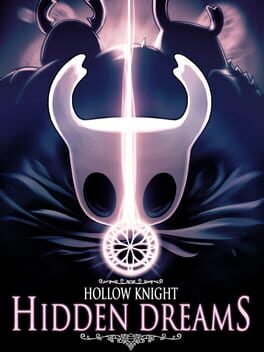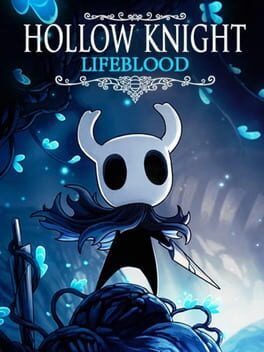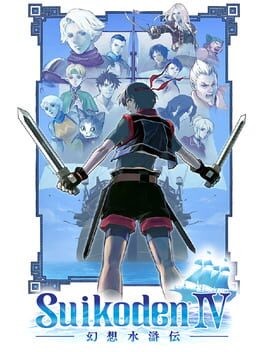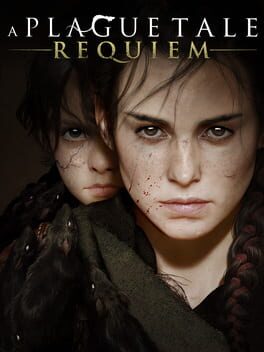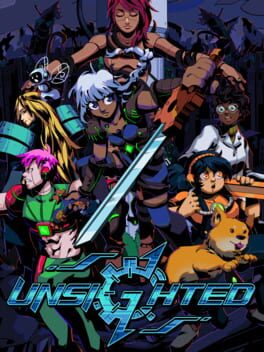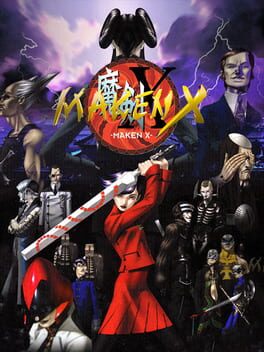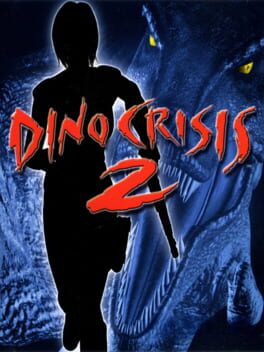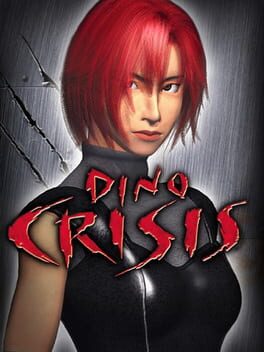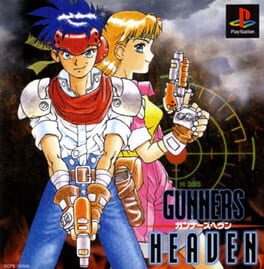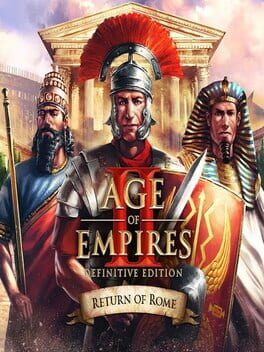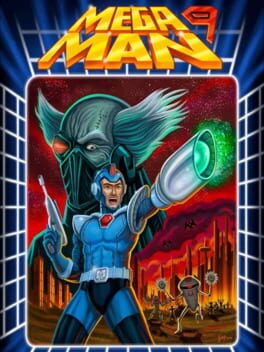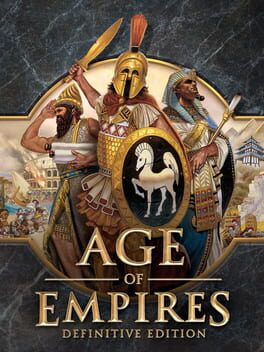newtontlod
BACKER
Very good update. The Hive was the area where I struggled the most to get through in the game (I didn't do Godmaster), even more than the White Palace, and it was the only area where I lost my souls during the playthrough when I completed the game. I like the visual of the area, with colors that are stronger than the game's average, I like the bees as a theme, and the boss is quite enjoyable to face as well.
2017
One of the coolest things that happens to us as individuals is how our opinions and feelings can change over time.
In 2019, I tried playing Hollow Knight for the first time and played quite a bit of the game, almost 10 hours, and although I was enjoying it, I wasn't captivated by the mystique that the game apparently had, like everyone else was. Fast-forward to 2024 and I start a new save from scratch and well... I think I finally understand the commotion...
Hollow Knight is one of the best games I've ever played and largely because an older (and more grumpy and tired, I admit) "me" simply sees games a little differently and has a much bigger baggage than the "me" from 5 years ago.
What I like most about Hollow Knight is how I see in it elements of several games that I love and are in my pantheon of favorites. For the first time, another metroidvania gives me the sensation of exploring the map of Super Metroid, with its twists and turns, with its dense areas, getting lost in the dark tunnels of Deepnest, being overwhelmed by the bees in the Hive, or stunned by the beauty and ambiance of Queen's Garden.
I love the game's slower pace, which demands much more from you but rewards you handsomely with each new boss.
Or even how visually, somehow, the game sometimes just feels like a 2D Bloodborne to me, oozing in visual style even though this style can indeed be somewhat monotonous and monochromatic at times. At least that brings a very unique consistency to the whole game, making all areas somehow part of the same world, regardless of the variations in temperature and height that the areas may have.
Or even how, in gameplay, it's something smooth, enjoyable to play, to move with the character, with a rich palette of tools to face enemies or simply wander through the vast map. Its combat strongly reminds me of a blend of Mega Man X with Mega Man Zero, or rather, the best of the combat from these two series in one game. And its fluid movement clearly reminds me of Alucard from Symphony of the Night.
Even though it brings me this collection of memories, Hollow Knight is still something with a strong, unforgettable identity, and rarely equaled in the genre.
It just doesn't get a perfect score because, in fact, sometimes the game just seems to waste a little of your time, the Stag Stations aren't enough, and sometimes the feeling of visual monotony can hit a bit. There's some flaws in its design too... You shouldnt have to equip a charm to see where you are on the map and you already have a button to use spells, it is RB/R1, Circle/B should be exclusively used to heal. But who knows if the game won't grow even more in my tastes over time? It certainly has the capacity for that. Hollow Knight is simply amazing all around afterall.
In 2019, I tried playing Hollow Knight for the first time and played quite a bit of the game, almost 10 hours, and although I was enjoying it, I wasn't captivated by the mystique that the game apparently had, like everyone else was. Fast-forward to 2024 and I start a new save from scratch and well... I think I finally understand the commotion...
Hollow Knight is one of the best games I've ever played and largely because an older (and more grumpy and tired, I admit) "me" simply sees games a little differently and has a much bigger baggage than the "me" from 5 years ago.
What I like most about Hollow Knight is how I see in it elements of several games that I love and are in my pantheon of favorites. For the first time, another metroidvania gives me the sensation of exploring the map of Super Metroid, with its twists and turns, with its dense areas, getting lost in the dark tunnels of Deepnest, being overwhelmed by the bees in the Hive, or stunned by the beauty and ambiance of Queen's Garden.
I love the game's slower pace, which demands much more from you but rewards you handsomely with each new boss.
Or even how visually, somehow, the game sometimes just feels like a 2D Bloodborne to me, oozing in visual style even though this style can indeed be somewhat monotonous and monochromatic at times. At least that brings a very unique consistency to the whole game, making all areas somehow part of the same world, regardless of the variations in temperature and height that the areas may have.
Or even how, in gameplay, it's something smooth, enjoyable to play, to move with the character, with a rich palette of tools to face enemies or simply wander through the vast map. Its combat strongly reminds me of a blend of Mega Man X with Mega Man Zero, or rather, the best of the combat from these two series in one game. And its fluid movement clearly reminds me of Alucard from Symphony of the Night.
Even though it brings me this collection of memories, Hollow Knight is still something with a strong, unforgettable identity, and rarely equaled in the genre.
It just doesn't get a perfect score because, in fact, sometimes the game just seems to waste a little of your time, the Stag Stations aren't enough, and sometimes the feeling of visual monotony can hit a bit. There's some flaws in its design too... You shouldnt have to equip a charm to see where you are on the map and you already have a button to use spells, it is RB/R1, Circle/B should be exclusively used to heal. But who knows if the game won't grow even more in my tastes over time? It certainly has the capacity for that. Hollow Knight is simply amazing all around afterall.
2004
That's not as dreadful as people make it out to be. I think most people who play JRPGs either haven't played enough bad JRPGs or simply don't know how to use a gradient scale well and end up confusing "mediocre" with "horrible" more often than not.
That being said, Suikoden IV is a problematic game. Even though it has an interesting premise where this time your castle is a boat and you eventually have a fleet to sail the seas, the game itself is quite anemic, lacking denser content. Visually, it's also a worse game than its predecessor (although the character design still appeals to me), it has a worse story as well, and the decision to only use four characters in battle isn't a good one either. But the new army battles are pretty nice! The ship fights are cool although a tad simplistic.
The lore behind the cursed rune is pretty cool but it's not supported by an especially interesting plot, and the hero's rival is a rather uninteresting character.
The islands could also have more things to explore, the game could have more dungeons... Anyway, Suikoden IV unfortunately ends up going in the opposite direction of Suikoden III, which was bloated and ends up having too little content or developing things too little while the previous game did it in excess.
But the Suikoden loop is still here and it's still fun to explore places and recruit people for your army.
Yes, yes, the random battles have a completely INSANE frequency but avoiding battles is as easy as it gets. And yes, using the boat is not pleasant overall but at least this time you meet Viki within less than 10 hours of gameplay instead of 60 hours like in Suikoden III, cutting down a lot on the excessive backtracking from the previous game.
Anyway, Suikoden IV is a poor game, probably the weakest in the series but by no means one of the worst JRPGs of all time or anything like that. You can have fun with it, and if it happens to be your first Suikoden for some reason, you probably won't find it as bad as those who play it with the baggage of the previous ones (which was my case, but even then I don't think it's a bad game, just mediocre). And indeed, considering it's the first game in the chronology, maybe it would be interesting to start with it after all.
That being said, Suikoden IV is a problematic game. Even though it has an interesting premise where this time your castle is a boat and you eventually have a fleet to sail the seas, the game itself is quite anemic, lacking denser content. Visually, it's also a worse game than its predecessor (although the character design still appeals to me), it has a worse story as well, and the decision to only use four characters in battle isn't a good one either. But the new army battles are pretty nice! The ship fights are cool although a tad simplistic.
The lore behind the cursed rune is pretty cool but it's not supported by an especially interesting plot, and the hero's rival is a rather uninteresting character.
The islands could also have more things to explore, the game could have more dungeons... Anyway, Suikoden IV unfortunately ends up going in the opposite direction of Suikoden III, which was bloated and ends up having too little content or developing things too little while the previous game did it in excess.
But the Suikoden loop is still here and it's still fun to explore places and recruit people for your army.
Yes, yes, the random battles have a completely INSANE frequency but avoiding battles is as easy as it gets. And yes, using the boat is not pleasant overall but at least this time you meet Viki within less than 10 hours of gameplay instead of 60 hours like in Suikoden III, cutting down a lot on the excessive backtracking from the previous game.
Anyway, Suikoden IV is a poor game, probably the weakest in the series but by no means one of the worst JRPGs of all time or anything like that. You can have fun with it, and if it happens to be your first Suikoden for some reason, you probably won't find it as bad as those who play it with the baggage of the previous ones (which was my case, but even then I don't think it's a bad game, just mediocre). And indeed, considering it's the first game in the chronology, maybe it would be interesting to start with it after all.
It gets better and better as you progress through the game.
It's a sequel with gorgeous graphics, gameplay better than the first one (it's cool to see them continuing to be inspired by Naughty Dog and keeping up with the wide-linear settings of Uncharted 4 and The Last of Us 2), and an incredible collection of characters. All the characters who help the protagonists are distinct not only in gameplay but also in personality and motivations. Even with such a bleak scenario and story, it's amazing how they made so many lovable and interesting characters. Even the villains are detestable as they should be.
I particularly like that the game is longer but not by much. This allows time for the game to "breathe" and develop the supporting characters better, as well as showcase all its beauty. Rarely have I taken so many screenshots of a game and used the photo mode as much as I did with this game, and the entire battle-free arc of chapter 9 was quite enjoyable due to the variety of visually distinct places you visit.
With that said, it's even difficult to choose which set piece is the best since each one is better than the other. And it's hard not to become attached to the work done in developing Amicia. She's definitely one of the best protagonists in recent years, the kind of character you don't just control but root for to succeed. Which makes the end of the game even more special.
I really hope they're willing to make a third game after all, there is another outbreak of plague in human history, right? Or maybe some additional material about the sixth-century outbreak, which the game also shows.
And if they do come back with the idea one day, I hope they make even more progress in the quality of the battle settings, trying to avoid some of the jank the game has and avoiding scenarios with so many instant failstates. And have ideas for gameplay variety, perhaps a few more twists in the way the rats behave would be quite interesting...
It's a sequel with gorgeous graphics, gameplay better than the first one (it's cool to see them continuing to be inspired by Naughty Dog and keeping up with the wide-linear settings of Uncharted 4 and The Last of Us 2), and an incredible collection of characters. All the characters who help the protagonists are distinct not only in gameplay but also in personality and motivations. Even with such a bleak scenario and story, it's amazing how they made so many lovable and interesting characters. Even the villains are detestable as they should be.
I particularly like that the game is longer but not by much. This allows time for the game to "breathe" and develop the supporting characters better, as well as showcase all its beauty. Rarely have I taken so many screenshots of a game and used the photo mode as much as I did with this game, and the entire battle-free arc of chapter 9 was quite enjoyable due to the variety of visually distinct places you visit.
With that said, it's even difficult to choose which set piece is the best since each one is better than the other. And it's hard not to become attached to the work done in developing Amicia. She's definitely one of the best protagonists in recent years, the kind of character you don't just control but root for to succeed. Which makes the end of the game even more special.
I really hope they're willing to make a third game after all, there is another outbreak of plague in human history, right? Or maybe some additional material about the sixth-century outbreak, which the game also shows.
And if they do come back with the idea one day, I hope they make even more progress in the quality of the battle settings, trying to avoid some of the jank the game has and avoiding scenarios with so many instant failstates. And have ideas for gameplay variety, perhaps a few more twists in the way the rats behave would be quite interesting...
2021
The first major Brazilian indie game is simply incredible, with striking visuals, one of the best and most interesting (and well-told) narratives for a metroidvania, and a wonderful gameplay system.
The influences are almost all the right ones and almost all of them are properly utilized. We have elements of Souls-like games here, 2D Zeldas, and of course, a classic metroidvania system with a map that is quite rewarding to explore. The combat system is simply one of the best systems for a 2D game I've ever seen as well. Parrying is very satisfying to land, there's an interesting variety of items, and the chips create intriguing build combinations. All of this with a good and memorable selection of boss fights.
That being said, it's sad how much the game focuses on its gimmicks in the dungeons. A good portion of them are simply tedious to use or become stale too quickly. And the focus on them is excessive, with some cases not even being the best inspiration for power-ups (the spinner being one of the most uninspired power-ups from Zelda, for example).
The amount of jumping puzzles and platforming simply doesn't fit as well in a game with an isometric camera like this. Even in a game with combat far inferior to Unsighted like A Link to the Past, the focus seems to be more on combat and puzzles rather than platforming sections.
This collection of gimmicks that combine platforming with quick responses also doesn't translate well to the game's co-op mode.
In conclusion, considering that it's the studio's first game, Unsighted is quite impressive, but it's still a game that does many things well as few others but insists on focusing on things it doesn't do as well. It's definitely worth keeping an eye on the studio's next endeavors, as they already have another interesting game in production.
The influences are almost all the right ones and almost all of them are properly utilized. We have elements of Souls-like games here, 2D Zeldas, and of course, a classic metroidvania system with a map that is quite rewarding to explore. The combat system is simply one of the best systems for a 2D game I've ever seen as well. Parrying is very satisfying to land, there's an interesting variety of items, and the chips create intriguing build combinations. All of this with a good and memorable selection of boss fights.
That being said, it's sad how much the game focuses on its gimmicks in the dungeons. A good portion of them are simply tedious to use or become stale too quickly. And the focus on them is excessive, with some cases not even being the best inspiration for power-ups (the spinner being one of the most uninspired power-ups from Zelda, for example).
The amount of jumping puzzles and platforming simply doesn't fit as well in a game with an isometric camera like this. Even in a game with combat far inferior to Unsighted like A Link to the Past, the focus seems to be more on combat and puzzles rather than platforming sections.
This collection of gimmicks that combine platforming with quick responses also doesn't translate well to the game's co-op mode.
In conclusion, considering that it's the studio's first game, Unsighted is quite impressive, but it's still a game that does many things well as few others but insists on focusing on things it doesn't do as well. It's definitely worth keeping an eye on the studio's next endeavors, as they already have another interesting game in production.
1999
The first game directed by the man who caused not just one, but two revolutions in JRPGs (Persona 3 and Shin Megami Tensei 3) and saved his own company, unfortunately, is a mixed bag.
Sure, being an Atlus game involving Hashino, Okada, Meguro, and Kaneko gives it plenty of vibes, but the game itself is rather weak.
The gameplay idea seems flawed from the start. A first-person game on a console like the Dreamcast and before these types of games were comfortable to play on the console. The camera works extremely poorly, the tracking of the game is quite awkward, and the combat is very tough and simplistic.
The game has a series of one-note enemies, the levels have sections with frustrating enemy placements, and the game never hits a nice rhythm. The brain jack system is a cool idea, but ultimately, the characters you play with are never different enough to justify it.
And of course, this first-person system never really works.
I love the idea of traveling the world; one of my favorite series does it (Shadow Hearts), Atlus has proven several times to be great at representing these real-world locations, and this game is no different, but the strong vibes don't save Maken X from being an extremely mediocre game.
That said, I played the early stages of the PS2 version and found a significant improvement. Of course, it loses some of the novelty of the game, but what it loses in that, it gains in a better experience. Not only in terms of camera and gameplay control (in an early PS2 style that I particularly enjoy) but with better features and quality of life improvements like save points in the stages.
Furthermore, there is also a manga that apparently is an adaptation of the interesting scenario found in this game.
In the end, the potential exists here but is never realized. This is one of the games I most wanted to see Atlus try again, but that must be impossible, unfortunately.
Sure, being an Atlus game involving Hashino, Okada, Meguro, and Kaneko gives it plenty of vibes, but the game itself is rather weak.
The gameplay idea seems flawed from the start. A first-person game on a console like the Dreamcast and before these types of games were comfortable to play on the console. The camera works extremely poorly, the tracking of the game is quite awkward, and the combat is very tough and simplistic.
The game has a series of one-note enemies, the levels have sections with frustrating enemy placements, and the game never hits a nice rhythm. The brain jack system is a cool idea, but ultimately, the characters you play with are never different enough to justify it.
And of course, this first-person system never really works.
I love the idea of traveling the world; one of my favorite series does it (Shadow Hearts), Atlus has proven several times to be great at representing these real-world locations, and this game is no different, but the strong vibes don't save Maken X from being an extremely mediocre game.
That said, I played the early stages of the PS2 version and found a significant improvement. Of course, it loses some of the novelty of the game, but what it loses in that, it gains in a better experience. Not only in terms of camera and gameplay control (in an early PS2 style that I particularly enjoy) but with better features and quality of life improvements like save points in the stages.
Furthermore, there is also a manga that apparently is an adaptation of the interesting scenario found in this game.
In the end, the potential exists here but is never realized. This is one of the games I most wanted to see Atlus try again, but that must be impossible, unfortunately.
2000
Classic, classic, classic. It was one of my favorite Capcom games for a long time, and replaying it after so long reminds me why.
Addressing the elephant in the room first, yes, it's not survival horror in the style of the REs and the first Dino Crisis, but I don't find that to be such a problem in the case of DC2. On the contrary, I think the series gains even more of its own identity and becomes something with its own style, it's a pity it was never replicated.
Visually, it's one of the most beautiful games of its generation, the controls are the best and most responsive tank controls out there, and the combo system and item purchasing probably make it my favorite arcade-like game. The way the game flows is incredible too, definitely the best pacing in the genre, and even the minigames here are fun and engaging. A significant and quite impressive leap in quality considering the first game's quality.
It's full of variety in enemies and scenarios as well, in weapons, in everything. And even though you control two characters, you never feel like it's bloated, it's setpiece after setpiece, cutscene after cutscene, gauntlet after gauntlet. You could almost call the game survival action or something like that. Few things in games are as satisfying as taking down Raptors with the Solid Cannon, Plesiosaurus and Pteranodon with the Missile Pod, and Inostrancevia with the Anti-Tank Rifle.
It's a shame it doesn't have an item mixing system like the first game, that's the thing I miss the most from the first one. I can understand the removal of the puzzles since some of the puzzles in the first game can be confusing.
And it's also a shame Dino Crisis didn't become another branch of Capcom's survival games; Dino Crisis 2 is the best game they made during that time and in that style.
Addressing the elephant in the room first, yes, it's not survival horror in the style of the REs and the first Dino Crisis, but I don't find that to be such a problem in the case of DC2. On the contrary, I think the series gains even more of its own identity and becomes something with its own style, it's a pity it was never replicated.
Visually, it's one of the most beautiful games of its generation, the controls are the best and most responsive tank controls out there, and the combo system and item purchasing probably make it my favorite arcade-like game. The way the game flows is incredible too, definitely the best pacing in the genre, and even the minigames here are fun and engaging. A significant and quite impressive leap in quality considering the first game's quality.
It's full of variety in enemies and scenarios as well, in weapons, in everything. And even though you control two characters, you never feel like it's bloated, it's setpiece after setpiece, cutscene after cutscene, gauntlet after gauntlet. You could almost call the game survival action or something like that. Few things in games are as satisfying as taking down Raptors with the Solid Cannon, Plesiosaurus and Pteranodon with the Missile Pod, and Inostrancevia with the Anti-Tank Rifle.
It's a shame it doesn't have an item mixing system like the first game, that's the thing I miss the most from the first one. I can understand the removal of the puzzles since some of the puzzles in the first game can be confusing.
And it's also a shame Dino Crisis didn't become another branch of Capcom's survival games; Dino Crisis 2 is the best game they made during that time and in that style.
1999
I didn't expect to enjoy it as much as I did, it's much better than I remembered.
It's certainly Capcom's classic survival horror game with the most tension. I also find the level design very good, perhaps as good as RE2's, and the controls work very well.
The differences between Dino Crisis and Resident Evil are all good and give Dino Crisis its own unique identity. The dinosaurs are extremely dangerous, which increases the tension of the game, the mixing system is much better than the herb system in RE (and with a complexity similar to the gunpowder mixing systems of RE3), and the puzzles are fun to solve. The voice acting is also wonderful in a goofy 90s way.
Of course, there could be more variety of dinosaurs (which we would see happen in the 2nd game), I'm not completely sold on the box system (I like the idea of having to spend items to open them, my problem is not being able to access the different colored ones). As for the pacing, many people don't like it, but I personally don't see any issues. In fact, it's a slower game than the REs, but not by much either; I think it ends up being more about memorizing the map to avoid walking more than necessary. I also like the choice of dinosaurs repopulating the rooms once or twice but never infinitely, since ammo is extremely scarce in the game compared to the REs (still enough to kill almost all the creatures, especially if you focus on fusing poison darts).
Overall, the game is Capcom goodness from the 90s. Good level design, striking visuals, a huge atmosphere, high production values. In the end, I was wrong not to expect a great game on this replay.
It's certainly Capcom's classic survival horror game with the most tension. I also find the level design very good, perhaps as good as RE2's, and the controls work very well.
The differences between Dino Crisis and Resident Evil are all good and give Dino Crisis its own unique identity. The dinosaurs are extremely dangerous, which increases the tension of the game, the mixing system is much better than the herb system in RE (and with a complexity similar to the gunpowder mixing systems of RE3), and the puzzles are fun to solve. The voice acting is also wonderful in a goofy 90s way.
Of course, there could be more variety of dinosaurs (which we would see happen in the 2nd game), I'm not completely sold on the box system (I like the idea of having to spend items to open them, my problem is not being able to access the different colored ones). As for the pacing, many people don't like it, but I personally don't see any issues. In fact, it's a slower game than the REs, but not by much either; I think it ends up being more about memorizing the map to avoid walking more than necessary. I also like the choice of dinosaurs repopulating the rooms once or twice but never infinitely, since ammo is extremely scarce in the game compared to the REs (still enough to kill almost all the creatures, especially if you focus on fusing poison darts).
Overall, the game is Capcom goodness from the 90s. Good level design, striking visuals, a huge atmosphere, high production values. In the end, I was wrong not to expect a great game on this replay.
2007
Fixes the most obvious and problematic flaw of the previous game: the horrendous navigation. Just for that, it's immediately better than ZX, but honestly, not by much. Clearly, it's a huge mistake to make the protagonist transform into the bosses.
Their uses are very limited, and most of them are simply poorly controlled or sometimes even impossible, which for a Mega Man game is a crime. One of the main things about these games is how good it feels to control the character. Furthermore, it reuses a lot from the previous game like the armors and level design, although it doesn't have the atrocious backtracking of the previous game, it's also not the most inspired. Because of this, power-ups and abilities have never been as situational as in this game. Some things still don't make sense, like the life system in a game with this structure, and of course, the plethora of one-way teleports that the game doesn't save if you get a game over.
The game's boss collection is also quite hit or miss, with some taken from the previous game and the new ones being inconsistent in quality.
Having played practically all of the Inti Creates Mega Man games, I can safely say that they never quite understood what made the old games so fun and special to replay. I find myself replaying very few of their games (maybe Zero 2, Zero 3, and MM10) while I could replay several classic Mega Man games from 1-8 and MMX from 1 to 6.
Some of the things that stand out to me most clearly to say they don't quite get it is putting a metroidvania map in a franchise that never needed it to have great and enjoyable level design. Furthermore, the map itself is bad and easily ranks among the worst among several metroidvanias I've played. Additionally, the power-ups you gain after each boss in the Inti Creates MM games, especially the Zero/ZX series, range from mediocre to useless. In X4, for example, you can use Zero, and I found the balance there much better.
Moreover, this format of mundane and repetitive side quests, something that tries to function for hours like an RPG, and grinding in general for E-Crystals don't fit the style of game that Mega Man aims to be. At least in this regard, ZXA is more tolerable compared to its predecessor. (I wasn't required to complete a gigantic and unbearable quest chain to obtain the last sub-tank).
Even in the games I consider very good (Zero 2 and Zero 3), I still don't think they perfectly realize what was good about the other games.
For me, Mega Man 11 is much better than any game from this team, and I prefer that Capcom continue with an in-house solution if they want to make other games in the series in the future.
Their uses are very limited, and most of them are simply poorly controlled or sometimes even impossible, which for a Mega Man game is a crime. One of the main things about these games is how good it feels to control the character. Furthermore, it reuses a lot from the previous game like the armors and level design, although it doesn't have the atrocious backtracking of the previous game, it's also not the most inspired. Because of this, power-ups and abilities have never been as situational as in this game. Some things still don't make sense, like the life system in a game with this structure, and of course, the plethora of one-way teleports that the game doesn't save if you get a game over.
The game's boss collection is also quite hit or miss, with some taken from the previous game and the new ones being inconsistent in quality.
Having played practically all of the Inti Creates Mega Man games, I can safely say that they never quite understood what made the old games so fun and special to replay. I find myself replaying very few of their games (maybe Zero 2, Zero 3, and MM10) while I could replay several classic Mega Man games from 1-8 and MMX from 1 to 6.
Some of the things that stand out to me most clearly to say they don't quite get it is putting a metroidvania map in a franchise that never needed it to have great and enjoyable level design. Furthermore, the map itself is bad and easily ranks among the worst among several metroidvanias I've played. Additionally, the power-ups you gain after each boss in the Inti Creates MM games, especially the Zero/ZX series, range from mediocre to useless. In X4, for example, you can use Zero, and I found the balance there much better.
Moreover, this format of mundane and repetitive side quests, something that tries to function for hours like an RPG, and grinding in general for E-Crystals don't fit the style of game that Mega Man aims to be. At least in this regard, ZXA is more tolerable compared to its predecessor. (I wasn't required to complete a gigantic and unbearable quest chain to obtain the last sub-tank).
Even in the games I consider very good (Zero 2 and Zero 3), I still don't think they perfectly realize what was good about the other games.
For me, Mega Man 11 is much better than any game from this team, and I prefer that Capcom continue with an in-house solution if they want to make other games in the series in the future.
1995
A game inspired by Gunstar Heroes from the team that would make my favorite JRPG series (Wild Arms)? On paper, it seemed like a great idea.
In practice, not so much. The game is quite frustrating overall, with enemies constantly juggling you, stages being too long, bosses taking too long to defeat with few attack patterns, lack of checkpoints before bosses, and a somewhat limited system overall for a game of this caliber on consoles.
A pity overall, but at least visually it's quite beautiful, and various elements such as some weapons appeared later in the Wild Arms games, so I can't be too negative about the game.
It's worth at least testing and playing a bit, but each stage will become more frustrating and require more and more precision than the last.
In practice, not so much. The game is quite frustrating overall, with enemies constantly juggling you, stages being too long, bosses taking too long to defeat with few attack patterns, lack of checkpoints before bosses, and a somewhat limited system overall for a game of this caliber on consoles.
A pity overall, but at least visually it's quite beautiful, and various elements such as some weapons appeared later in the Wild Arms games, so I can't be too negative about the game.
It's worth at least testing and playing a bit, but each stage will become more frustrating and require more and more precision than the last.
The definitive way to experience a significant portion of the original Age of Empires campaign. Sure, the building logic and balance of the first one aren't as good as the second, but just using the engine from 2 already improves everything by 300%. The completely new campaigns are also very good, and I believe that here is a good compromise between using the content from the first game and modernizing it enough to be tolerable.
Of course, it would have been better if all the original campaigns had been ported, but at least not much was lost. And 30 hours for the low price they charge for this DLC nowadays is more than worthwhile.
Of course, it would have been better if all the original campaigns had been ported, but at least not much was lost. And 30 hours for the low price they charge for this DLC nowadays is more than worthwhile.
2010
It's still unnecessarily antiquated and ignores all the progress that happened from Mega Man 5 to Mega Man 8, but at least it's a much less unfair game and also does have functional menus, L-R function for weapons, and overall better flow than MM9. It also doesn't have the unnecessarily slow shop like in 9. That said, these two games were overall a disaster for Mega Man's natural evolution, but I would be much more forgiving with 10 if it had come out after 4.
Releasing it after 8 is like trying to use candles instead of light bulbs. Looking at it this way, it almost seems like a miracle that 11 turned out as good as it did.
Releasing it after 8 is like trying to use candles instead of light bulbs. Looking at it this way, it almost seems like a miracle that 11 turned out as good as it did.
2008
Terrible. By far the worst classic Mega Man game and a strong contender for the worst game in any Mega Man series. The design choices in this game are profoundly stupid. All of them. The removal of charge and slide, the outrageously slow menus with the same texts being repeated endlessly, the overuse of spikes and jumps that require perfection, among other things.
When it comes to retro games, it's true that they're often associated with high difficulty, but also with well-crafted level design and overall good progression. This game lacks an interesting one. Instead it is repetitive, and excessively frustrating level design. It also amplifies the worst flaws of these retro games like terrible navigation menus. In some cases, it goes beyond that, EXACERBATING these issues. Mega Man 2, for example, was nowhere near as clunky as 9 is.
I'd probably give it an even worse score, but visually, the game has a charm and a few stages are decent. It's a game from 1986 stuck in 2008. But not from a competent developer like Capcom, but rather on the level of bad stuff like LJN games.
When it comes to retro games, it's true that they're often associated with high difficulty, but also with well-crafted level design and overall good progression. This game lacks an interesting one. Instead it is repetitive, and excessively frustrating level design. It also amplifies the worst flaws of these retro games like terrible navigation menus. In some cases, it goes beyond that, EXACERBATING these issues. Mega Man 2, for example, was nowhere near as clunky as 9 is.
I'd probably give it an even worse score, but visually, the game has a charm and a few stages are decent. It's a game from 1986 stuck in 2008. But not from a competent developer like Capcom, but rather on the level of bad stuff like LJN games.
Probably the worst RTS I've ever played. I believe the Definitive Edition doesn't help, as it apparently adds a bunch of bugs such as stages where the enemy AI simply doesn't function correctly unless on a specific difficulty.
The pathfinding is atrocious (it was already bad for its time), the game is quite clunky, and clearly quite unbalanced as well. It's a shame because many things could have been fixed in this version and simply weren't.
And that becomes even worse when you consider that many of the campaigns and civilizations in this game are quite cool and quite iconic for history.
Apparently, some of the campaigns from the first game were remade for the second one in the Return of Rome DLC. I guess that must be the best way to experience a bit of the first Age of Empires.
The pathfinding is atrocious (it was already bad for its time), the game is quite clunky, and clearly quite unbalanced as well. It's a shame because many things could have been fixed in this version and simply weren't.
And that becomes even worse when you consider that many of the campaigns and civilizations in this game are quite cool and quite iconic for history.
Apparently, some of the campaigns from the first game were remade for the second one in the Return of Rome DLC. I guess that must be the best way to experience a bit of the first Age of Empires.
